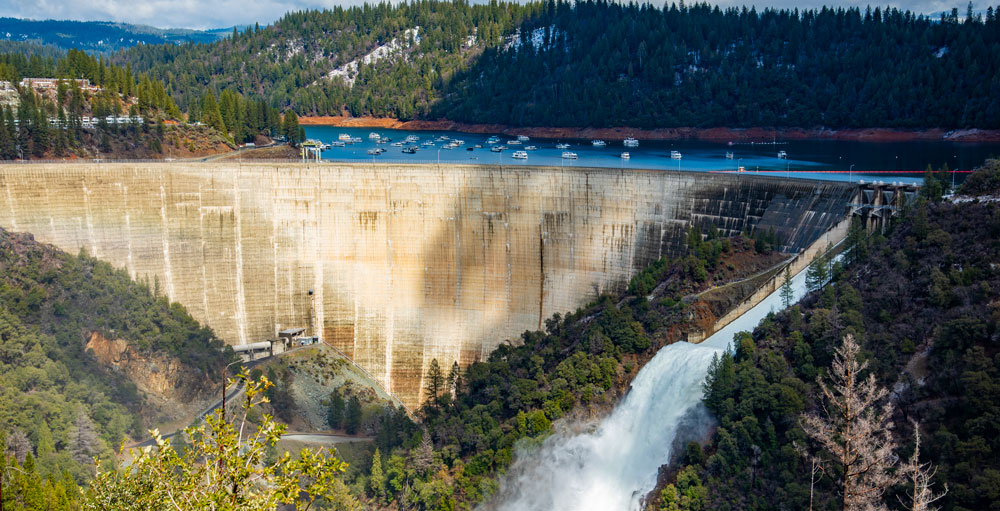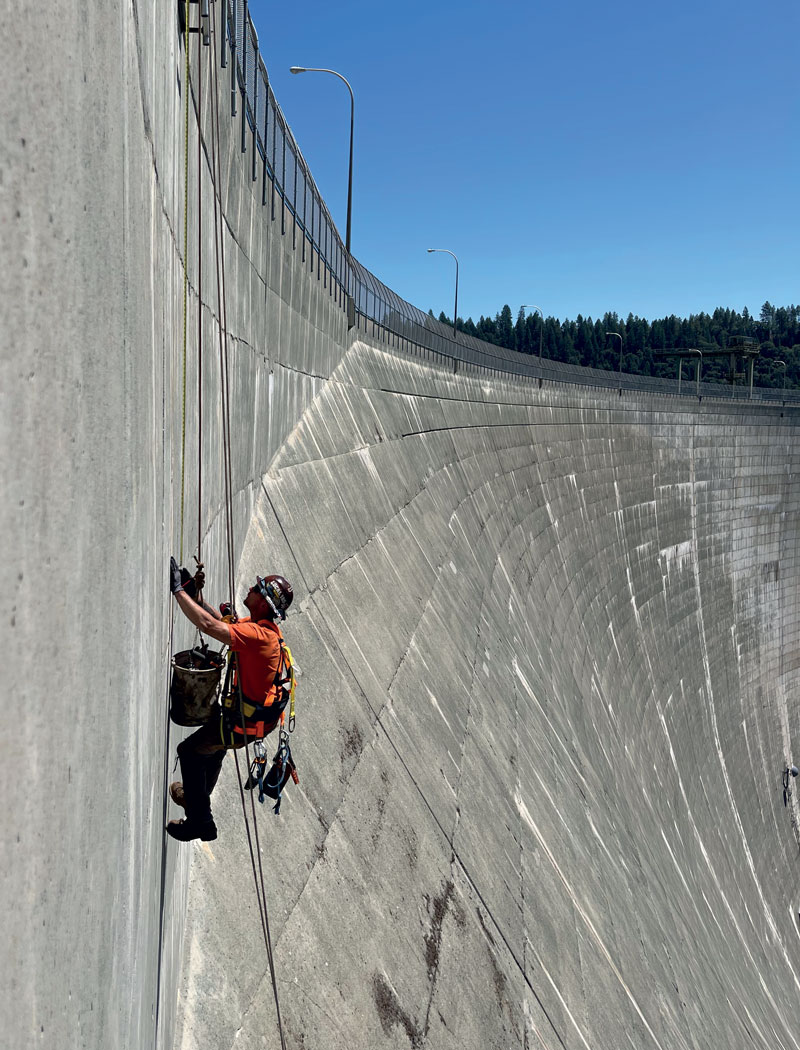Future of Water | Digital twins for dam health monitoring
Health monitor
Digital twin technology is being used to monitor the structural health of a 50-year-old concrete dam providing flood protection and water security in Northern California. Rob Hakimian reports.
New Bullards Bar Dam in the Yuba Valley of northern California is now more than 50 years old, having been completed in 1969 and put into operation in 1970. The double curvature concrete arch dam stands 197m tall and approximately 700m wide, forming a reservoir holding 1.19km3 of water. The dam is the second tallest in California and the fifth tallest in the United States.
The reservoir’s main purpose is to provide the population of Yuba County with flood protection and a sustainable water supply. It is also used for recreational activities, hydropower and fish habitat enhancement.
 Using digital twin technology will allow the Yuba Water Agency better monitor the health of the structure
Using digital twin technology will allow the Yuba Water Agency better monitor the health of the structure
With resilience becoming ever more essential in a world facing the impacts of climate change, the dam’s owner and operator Yuba Water Agency decided to implement Bentley Systems’ digital twin technology to collect detailed realtime data on its health.
PAST APPROACH
Monitoring the dam’s stresses and temperature has been imperative since it opened. Some of this was done through static devices, while other information was gathered from site surveys at difficult-to-reach locations.
“Both during and after construction, various instruments were installed including temperature gauges, stress meters, pressure gauges and plumb lines,” explains Yuba Water Agency chief dam safety engineer Tim Truong.
“Some of those instruments are no longer working, mostly the ones inside the concrete itself, as they weren’t designed for a 50-year lifespan.”
Engineers head into the dam’s galleries and take weekly readings from the static devices. These give them data on deflection, seepage, water pressure and temperature.
There were also external site surveys to measure dam movement. New Bullards Bar Dam comprises 24 monoliths – vertical concrete blocks – ranging from 18m to 30m wide. Previously, data was collected from certain points on the face of the dam, marked with targets. But there were only 13 of these and they only gave data on seven of the monoliths.
Data from these targets was collected by triangulating from four different points, each around 250m from the dam face.
These data collection points were in the middle of a remote valley. “We had to hire a surveyor to hike down beside the hill to these surveying locations,” Truong explains.
“It’s a treacherous hike to get out there and then they had to stand on a pedestal with their instruments. There were a lot of safety constraints.”
It was also time consuming: “It took a week for them to hike down, do the surveys, hike back to the office and process the data,” Truong says.
With each survey costing approximately $5,000 (£4,117) and considerable effort, Yuba Water Agency only sent out surveyors twice a year.
KEY FACT
197mHeight of New Bullards Bar dam
THE FUTURE SOLUTION
As the dam passed its half-century, Truong and his team started thinking about improving monitoring.
“We want to improve our real time monitoring. With the magnitude and importance of the dam, we needed to be able to understand its performance more frequently.
“Additionally, if there was a significant event like an earthquake, we wouldn’t have to send people out there, we could do it remotely.”
Truong heard from other dam operators that they were looking into using digital monitoring devices for thorough data collection to create digital twins, but not for dams of the size of the New Bullards Bar. “I saw a [digital twin] system for embankment dams, but I hadn’t seen anything for a vertical structure like this,” he says.
 The dam holds 1.19km3 of water
The dam holds 1.19km3 of water
Yuba Water Agency opted to install Bentley Systems’ iTwin Capture digital twin software, which processed an existing 3D reality mesh of the entire dam from thousands of dronecaptured images.
This was then uploaded to Bentley Systems’ cloud-based iTwin IoT Platform, where the model was connected with a newly installed monitoring system.
The monitoring system includes 83 prisms throughout the thrust blocks and arch portion of the dam and three pylons set at monitoring locations around the dam. The system is centred around a building known as the shed, which houses the data handling, mechanical and electrical equipment.
Lasers are fired from the shed to the prisms on the dam to take readings on dam movement. It also fires lasers to prisms on top of the pylons to calibrate its position relative to the dam.
Truong had little doubt that the system would work even though a digital twin had not been used on large concrete dam like New Bullards Bar. The challenge was to ensure that enough power could be provided to the shed, which is in the middle of the valley, more than 500m from the dam.
Its remote location means that the best solution for powering the shed is by solar panels, but Yuba Water Agency was unsure it would receive enough sunlight.
It has now been successfully set up, but the equipment is only usable if enough sunlight is available.
“We are still trying to determine what the appropriate operating conditions are, given the limited resources,” Truong says.
The installation of the prisms, shed and pylons started in July 2021 and was completed in November of that year.
THE SYSTEM
Truong describes the installation work as “straightforward”, but system calibration took some weeks.
Challenges included figuring out the appropriate baseline data and the power requirements.
“The baseline data was determined by using averages of the observations over the course of approximately two weeks,” Truong says.
Using the system, the user interface shows an image of the dam with all 83 prisms displayed; a simple click will give the latest data read out for a particular part of the dam and track this over time.
“Some of those instruments are no longer working, mostly the ones inside the concrete itself, as they weren’t designed for a 50-year lifespanThe data read out gives information about the coordinates and elevation of the prisms, giving real-time data about the dam’s movement.
Now it is a case of tweaking the iTwin to the team’s desire. “We are trying to establish thresholds for data points so we can set alarms that will warn us if something goes outside the bounds,” Truong says.
“It will probably take a year or two to understand the normal performance of the system and establish those thresholds.”
The total cost of installing the dam monitoring system on New Bullards Bar Dam, including design, construction and hardware was $633,000 (£520,741). In terms of return on investment, “it’s beyond monetary” according to Truong. “There’s also value in the confidence you have in ensuring the safety of the dam.”